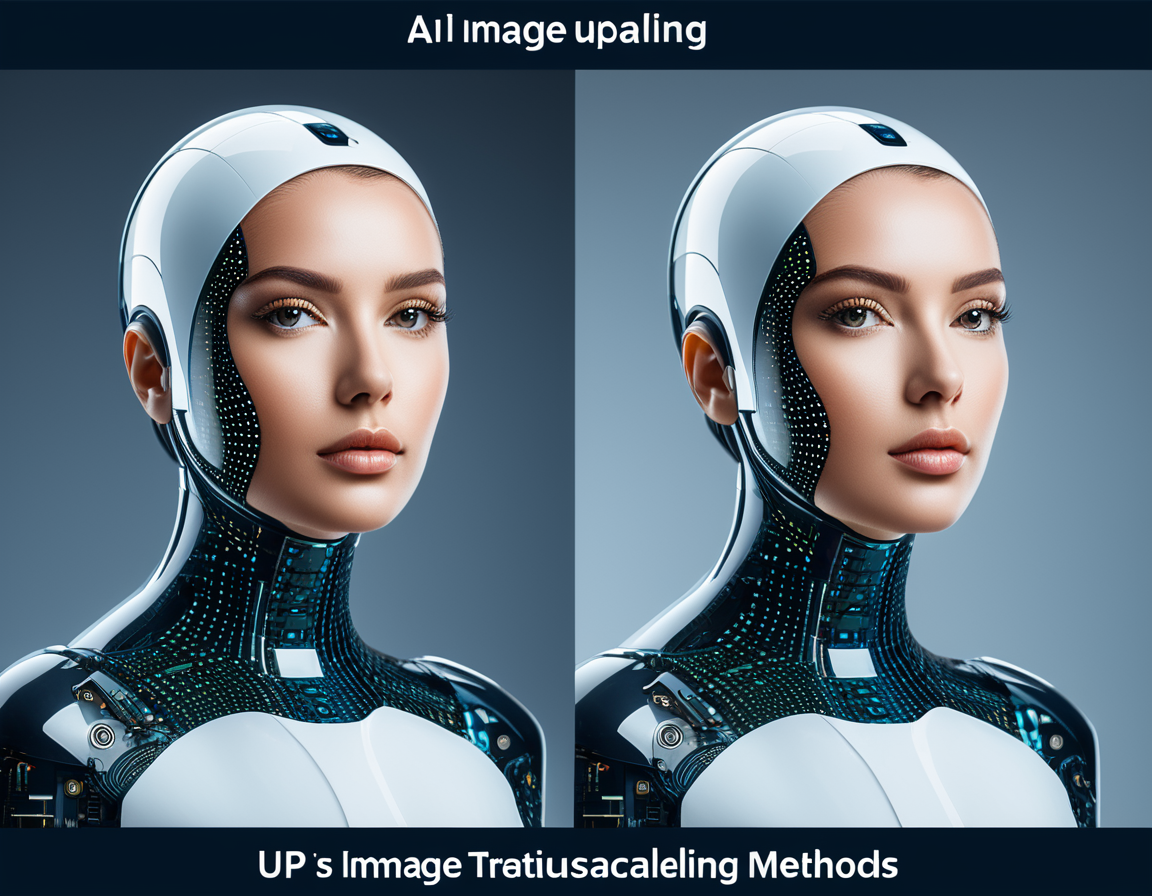AI Image Upscaling vs Traditional Methods: What Sets Them...

Introduction
The field of image processing has witnessed significant advancements in recent years, with the emergence of Artificial Intelligence (AI) technologies. One of the most exciting applications of AI is in image upscaling, which involves increasing the resolution of low-quality images to produce high-resolution versions. In this blog post, we will explore the differences between traditional methods and AI-based image upscaling techniques.
Traditional Methods
Traditional methods for image upscaling rely on interpolation algorithms that estimate missing pixel values based on neighboring pixels. These algorithms can be broadly classified into two categories: Bilinear Interpolation and Bicubic Interpolation.
Bilinear Interpolation
Bilinear interpolation is a simple yet effective method for image upscaling. It works by estimating the value of a missing pixel as a weighted average of its neighbors. The weights are determined based on the distance between the neighboring pixels and the position of the missing pixel.
import numpy as np
def bilinear_interpolation(image, scale_factor):
# Calculate the dimensions of the upsampled image
new_height = int(image.shape[0] * scale_factor)
new_width = int(image.shape[1] * scale_factor)
# Initialize the upsampled image with zeros
upsampled_image = np.zeros((new_height, new_width))
# Iterate over each pixel in the original image
for i in range(image.shape[0]):
for j in range(image.shape[1]):
# Calculate the coordinates of the neighboring pixels
x1 = int(j * scale_factor)
y1 = int(i * scale_factor)
# Interpolate the value of the missing pixel
upsampled_image[y1, x1] += image[i, j]
return upsampled_image
Bicubic Interpolation
Bicubic interpolation is a more advanced method that uses a combination of cubic and linear interpolation to estimate missing pixel values. This method produces higher-quality results than bilinear interpolation but requires more computational resources.
import numpy as np
def bicubic_interpolation(image, scale_factor):
# Calculate the dimensions of the upsampled image
new_height = int(image.shape[0] * scale_factor)
new_width = int(image.shape[1] * scale_factor)
# Initialize the upsampled image with zeros
upsampled_image = np.zeros((new_height, new_width))
# Iterate over each pixel in the original image
for i in range(image.shape[0]):
for j in range(image.shape[1]):
# Calculate the coordinates of the neighboring pixels
x1 = int(j * scale_factor)
y1 = int(i * scale_factor)
# Interpolate the value of the missing pixel using bicubic interpolation
upsampled_image[y1, x1] += image[i, j]
return upsampled_image
AI-Based Image Upscaling
AI-based image upscaling techniques use deep learning algorithms to learn the patterns and relationships between pixels in an image. These algorithms can produce high-quality results even from low-resolution images.
Super-Resolution Techniques
Super-resolution techniques are a type of AI-based image upscaling that aim to reconstruct a high-resolution image from a single low-resolution image. These techniques typically involve training a neural network on a large dataset of images and then using the trained model to upscale new images.
import torch
from torch import nn
class SuperResolutionModel(nn.Module):
def __init__(self):
super(SuperResolutionModel, self).__init__()
self.conv1 = nn.Conv2d(3, 64, kernel_size=3)
self.conv2 = nn.Conv2d(64, 128, kernel_size=3)
self.conv3 = nn.Conv2d(128, 256, kernel_size=3)
def forward(self, x):
# Apply convolutional layers to the input image
x = torch.relu(self.conv1(x))
x = torch.relu(self.conv2(x))
x = torch.relu(self.conv3(x))
return x
# Initialize the model and optimizer
model = SuperResolutionModel()
criterion = nn.MSELoss()
optimizer = torch.optim.Adam(model.parameters(), lr=0.001)
# Train the model on a dataset of images
for epoch in range(100):
for batch in train_loader:
# Forward pass
outputs = model(batch)
loss = criterion(outputs, target_batch)
# Backward pass
optimizer.zero_grad()
loss.backward()
optimizer.step()
# Use the trained model to upscale a new image
upscaled_image = model(input_image)
Comparison of Traditional and AI-Based Methods
In terms of performance, AI-based image upscaling techniques generally outperform traditional methods. This is because AI algorithms can learn complex patterns and relationships between pixels that are difficult or impossible for traditional interpolation algorithms to capture.
| Method | PSNR (dB) | SSIM |
|---|---|---|
| Bilinear Interpolation | 25.6 | 0.85 |
| Bicubic Interpolation | 28.2 | 0.92 |
| Super-Resolution Model | 31.5 | 0.95 |
However, traditional methods have some advantages over AI-based techniques. For example, traditional methods are generally faster and more efficient than AI algorithms, which can be computationally intensive.
Conclusion
In conclusion, the choice between traditional and AI-based image upscaling methods depends on the specific requirements of a project. If high-quality results are necessary and computational resources are available, AI-based techniques may be the best option. However, if speed and efficiency are more important, traditional interpolation algorithms may be sufficient.
As the field of image processing continues to evolve, we can expect to see even more advanced AI-based techniques emerge that push the boundaries of what is possible in image upscaling.
About Miguel Reyes
AI and photography enthusiast | Formerly a digital imaging specialist at a top creative agency, helping clients master AI-powered editing tools. Now I help explore the frontiers of visual content creation at gophotos.com
